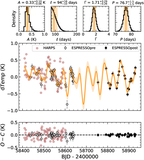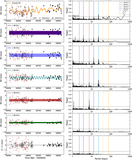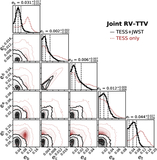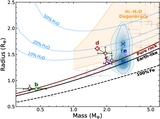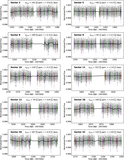Image Details
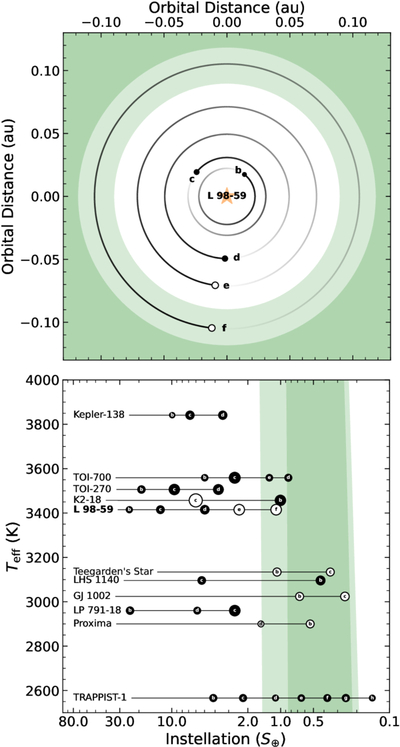
Caption: Figure 1.
Top panel: above view of the L 98-59 planetary system on BJD = 2460000 assuming circular orbits. The line of sight toward Earth is to the right. The Habitable Zone defined in R. K. Kopparapu et al. (2013) is shown in green for runaway/maximum greenhouse (conservative) and pale green for early recent Venus/early Mars (optimistic). Bottom panel: comparative exoplanetology of M-dwarf multiplanetary systems ordered by stellar effective temperature and planetary instellation. An arbitrary shift of +100 K in Teff has been applied to TOI-700 and Teegarden’s star for clarity. In both panels, transiting (nontransiting) exoplanets are shown as filled (open) circles, with circle size proportional to planetary radius. For planets with only a minimum mass constraint, the radius is set to the 95th percentile of the prediction from spright (H. Parviainen et al. 2024).
Copyright and Terms & Conditions
© 2025. The Author(s). Published by the American Astronomical Society.



